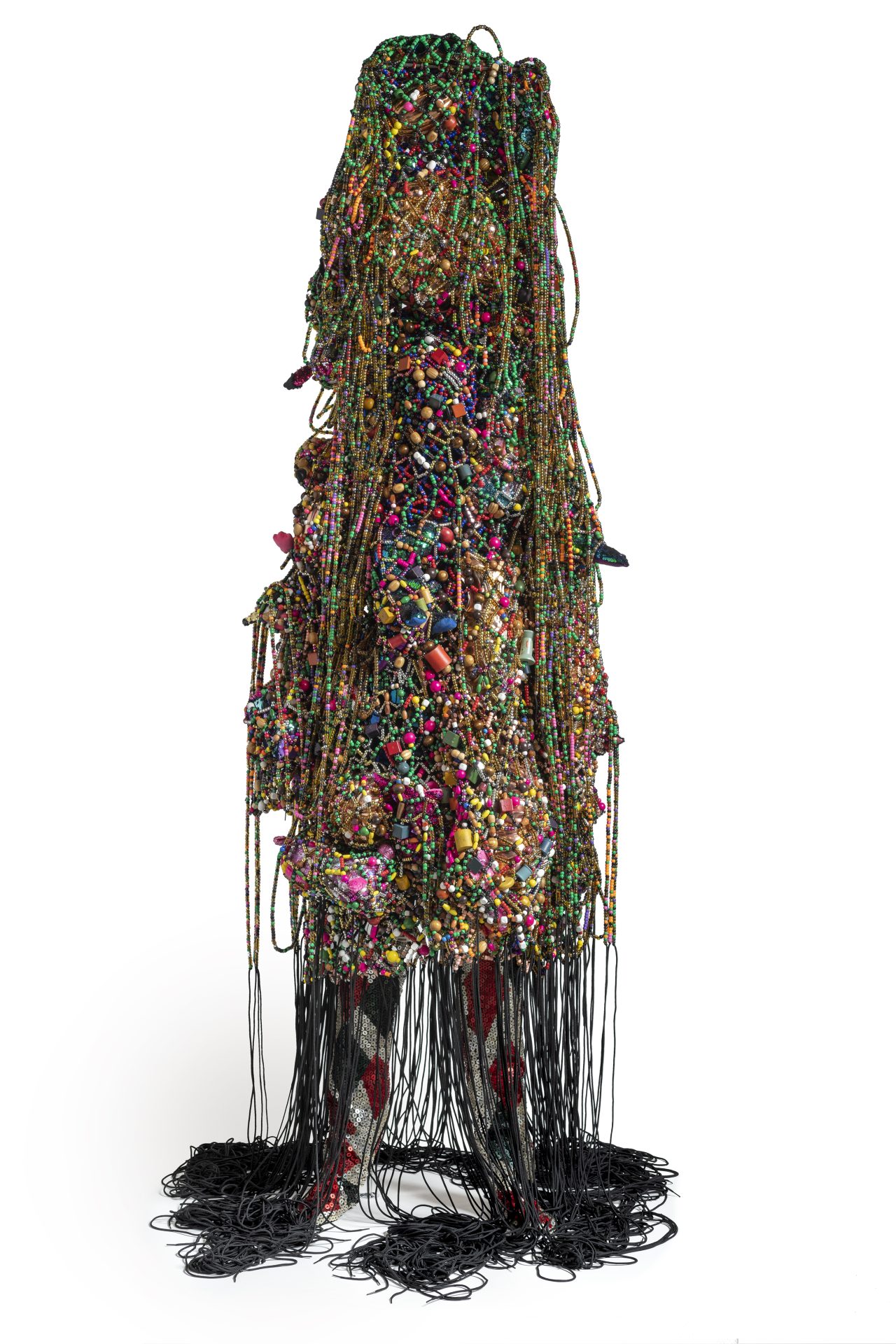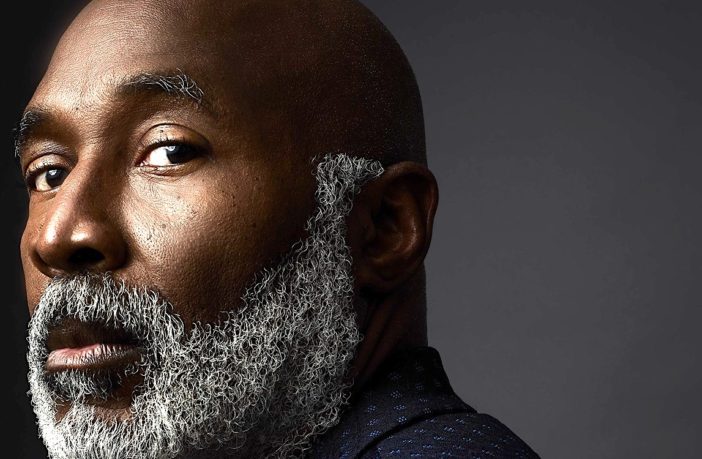When it comes to iconic artists who have defined the genre of Black conceptualism, Nick Cave tops the list. Known for his manipulation of unexpected materials, such as twigs, beads, buttons, sequins, fabric and crystals, Cave uses them to explore the depths of racial injustice and deliver his own commentary on social inequities. After the beating of Rodney King in 1991, Cave produced his famed Soundsuits, sculptural designs based on his own form.
Forothermore Installation View, Guggenheim Museum. Image: John Schweikert.
Those pieces, along with others from Cave’s expansive body of work, are now on display at the Solomon R. Guggenheim Museum in New York City. Nick Cave: Forothermore expands the entire breadth of the artist’s career, featuring sculpture, installation, video and rarely-seen early works. Guided by the belief that no one should be denied entry into the artistic experience, the opening weekend of the exhibition was free to the public, courtesy of a grant by the Ford Foundation.
Cave sat down with EBONY to discuss his 40-plus-year career and what inspiration is driving his next big artistic reveal.
EBONY: You wanted to make your Guggenheim exhibition freely accessible to the public. Why was that important to you?
Nick Cave: As an artist, I’m always looking at the role of civic duty within my practice. It’s not just about making art and putting it into the world. I’m also interested in who’s coming to experience the work and how can I reach underserved communities, programming that allows people of color to have that same experience and education.
As one of the leaders in the art world, please tell us more about your practice.
Art has always been a reflection of what’s going on in the world—this sort of vessel that I can respond to and share. My art, for the last four decades, has been based on inequality and police brutality. It was amazing for me to look back at history and my work that has been dedicated to the subject of racism and using art as a catalyst, a place of reckoning and a place of optimism, hope and forgiveness. As people of color, we are constantly in this place of acceptance, and at the same time, we have to constantly somehow figure out how are we coping and dealing with daily trauma. For me, I am fortunate to have this sort of platform to immerse myself in the disparities through the form of art making, and in that process, healing and revealing.
 Soundsuit, Nick Cave (2019). Image: courtesy of Nick Cave and Jack Shainman Gallery, New York.
Soundsuit, Nick Cave (2019). Image: courtesy of Nick Cave and Jack Shainman Gallery, New York.
How have your Soundsuits evolved?
The first soundsuit was in response to [what happened to]Rodney King. But there’s been Trayvon Martin, Michael Brown and the list goes on and on. When these incidents happen, I have to respond. These sculptural wearable objects are created to protect but also hide gender, race and class, forcing you to make judgments without bias. The first soundsuit was made from twigs. As I looked at the materials on the ground, they were speaking to me as something that was dismissed or disregarded. But that was the catalyst that built this suit of armor for me. It was me doing what I could to protect my innocence and my internal spirit. As I’m moving forward, I’m transferring these found materials into bronze and creating sound suits that are 20 ft. in height that live out in the public space. I’m always thinking about accessibility to the community.
What has been the key to your 40-plus-year career?
I think about the space of longevity. I was not interested in having a short art career. As a young person, I went in the corporate direction, thinking more about security and having a solid foundation. I was doing my work but that was not the core of my being. I knew that in order for me to embrace my happiness and joy, I had to indulge in this practice 110 percent. It’s all by chance; it’s all love. But I am willing to risk that, because of the emotional sort of spirit that it provides me. I am fascinated by what triggers me to respond to the way in which I exist and live in the world, and that I am the voice for so many others.
Where is your art taking you in 2023?
I’m looking forward to moving forward. This exhibition has allowed me to close this chapter that I’ve been invested in for more than three decades now. So I’m asking myself, “Who am I,” yet once again. I’m just excited about that sort of space and being open to receiving whatever comes to me in that process.



